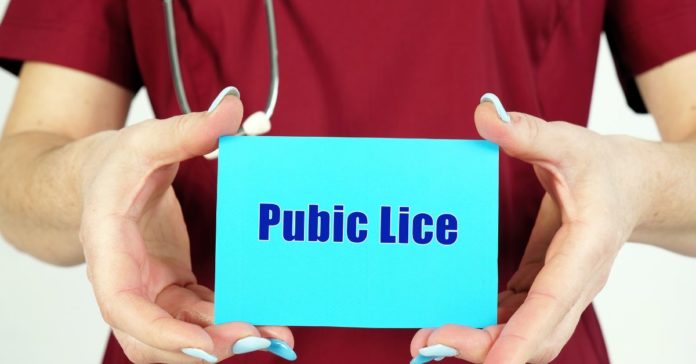Pubic lice are about 1.8-millimeter long, lice found in the genital areas. They are different from head and body lice and look like sea crabs. Pubic lice spread from one person to another through sexual contact, but they can also get transmitted through shared towels, bedding and clothes.
.
What are pubic lice?
Pubic lice are also known as crabs because of their six-legged crab like appearance. These can spread to hair in the armpits, chest, legs and facial hair like beards and moustaches. They are grey in colour but get darker once they feed on blood. Eggs of the crabs, called nits, are tiny, white-coloured eggs stuck to the hair near its roots.
What are the signs and symptoms of pubic lice?
- Itching is the most common sign of crab infestations which occurs about five days after the infestation. The itching is most intense during nighttime.
- You get blue spots near the bites.
- Dark brown or black powder-like louse droppings are present in the underwear.
- You can get a mild fever.
- You can get secondary infections from itch scratches.
Symptoms present in infected children include:
- Eye itching
- Eye irritation
- Pink eye, conjunctivitis
What are the risk factors for getting pubic lice?
- Sexual intercourse is the main factor of transmission
- Shared, contaminated towels, beddings, clothes, etc.
- People with STD (sexually transmitted diseases) are more prone to pubic lice
What are the home remedies? When to see a doctor?
Pubic lice are smaller than the body and head lice. However, they are visible to the naked eye. Tiny, white lice eggs present in the hair roots also show the presence of pubic crabs.
You can use special shampoos and creams to get rid of lice. Follow the method of use given in the description section of the product. You need to consult a doctor before using any product if you are pregnant or breastfeeding. Also, if the infestations are severe, consult a doctor.
.
Call 1860-500-1066 to book an appointment.
What are the treatment/prevention options?
The following treatments are available .
- Malathion
- Ivermectin (Stromectol): A single dose of two pills of this drug is taken, with an option to take another dose in 10 days
- Eyelash and eyebrow treatments: The treatment involves applying petroleum jelly with a cotton swab at night and washing it off in the morning
- If just a few live lice and nits are found, you can remove them using a nit comb or your fingernails.
You can avoid reinfection with the following methods:
- Wash bedding, clothing and towels using hot water and soap and dry them at high heat.
- Take a shower and wash the pubic hair and other body hair gently. (no need to use hot water at high temperature as it doesn’t help in this case).
- Remove nits (lice eggs) with tweezers or fingers and nails.
- Ask your partner to check for pubic lice and treat it.
- Don’t indulge in sexual activities until the crabs vanish.
Conclusion
Pubic lice infestation is commonly present in individuals who are sexually active and transmitted to others through sexual contact. It causes discomfort, itching and discolored skin. Medicated shampoos and creams can help manage crabs at home. A hygienic lifestyle is more important to avoid recurrence and further spread within family members. You can contact a doctor if the infestation persists.
Frequently Asked Questions (FAQs)
How can I recognize pubic lice infestation?
Pubic lice feed on blood and their bites will make your skin itch. You can also see them with the naked eye, they are grey-colored, about the size of a pinhead.
Can I use regular insecticides or head lice-killing products to kill pubic lice?
It is an absolute no, because the crabs are different from head and body lice, they don’t react to such products. Insecticides don’t kill lice and it is harmful to your health.
Common pubic lice treatments include shampoos and creams with 1% permethrin or pyrethrin. It is available in pharmacies without prescriptions.
If it doesn’t work, contact a doctor. The doctor will prescribe topical creams, oral medicines or stronger shampoos suitable for you.
What are the chances that I get an STD from pubic lice?
Not all people with pubic lice have sexually transmitted diseases, also you don’t necessarily get STDs from lice. Pubic crab is just an infestation of parasites, it doesn’t bring in life-threatening infections or diseases. They won’t cause any serious health problems like HIV, cancer etc.
But crabs are more common in people who already have sexually transmitted infections.


















